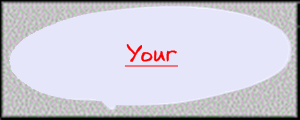Java Servlet
The Java Servlet API allows a software developer to add dynamic content to a Web server using the Java platform. The generated content is commonly HTML, but may be other data such as XML. Servlets are the Java counterpart to non-Java dynamic Web content technologies such as PHP, CGI and ASP.NET. Servlets can maintain state across many server transactions by using HTTP cookies, session variables or URL rewriting.
A Servlet is an object that receives a request and generates a response based on that request. The basic servlet package defines Java objects to represent servlet requests and responses, as well as objects to reflect the servlet's configuration parameters and execution environment. The package javax.servlet.http defines HTTP-specific subclasses of the generic servlet elements, including session management objects that track multiple requests and responses between the Web server and a client. Servlets may be packaged in a WAR file as a Web application.
Servlets can be generated automatically by JavaServer Pages (JSP) compiler, or alternately by template engines such as WebMacro. Often servlets are used in conjunction with JSPs in a pattern called "Model 2", which is a flavor of the model-view-controller pattern.
JavaServer Pages (JSP)
JavaServer Pages (JSP) is a Java technology that allows software developers to dynamically generate HTML, XML or other types of documents in response to a Web client request. The technology allows Java code and certain pre-defined actions to be embedded into static content.
The JSP syntax adds additional XML-like tags, called JSP actions, to be used to invoke built-in functionality. Additionally, the technology allows for the creation of JSP tag libraries that act as extensions to the standard HTML or XML tags. Tag libraries provide a platform independent way of extending the capabilities of a Web server.
JSPs are compiled into Java Servlets by a JSP compiler. A JSP compiler may generate a servlet in Java code that is then compiled by the Java compiler, or it may generate byte code for the servlet directly. JSPs can also be interpreted on-the-fly, reducing the time taken to reload changes.
JSP and Servlets
Architecturally, JSP may be viewed as a high-level abstraction of servlets that is implemented as an extension of the Servlet 2.1 API. Both servlets and JSPs were originally developed at Sun Microsystems. Starting with version 1.2 of the JSP specification, JavaServer Pages have been developed under the Java Community Process. JSR 53 defines both the JSP 1.2 and Servlet 2.3 specifications and JSR 152 defines the JSP 2.0 specification. As of May 2006 the JSP 2.1 specification has been released under JSR 245 as part of Java EE 5.
Here I've share some note about Servlet and JavaServer Pages(JSP). You can download it learn about servlet and JSP by yourselft. That note will teach you step-by-step about to use and learn servlet and JSP.. To download it, just click thedownload icon below..happy download..








1 comment:
Servlets and Java Server Pages are complementary APIs, both providing a means for generating dynamic Web content. A servlet is a Java class implementing the javax.servlet.Servlet interface that runs within a Web or application server's servlet engine, servicing client requests forwarded to it through the server. A Java Server Page is a slightly more complicated beast.
vitamin k
Post a Comment